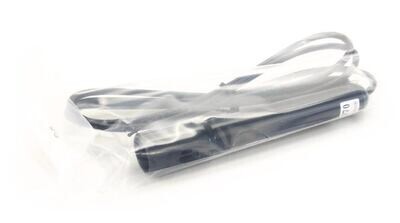Verzending 24–48 u • Levering in de hele EU • Veilige chemieverpakking
Conductivity sensors
Conductivity sensors are essential instruments in various industries and applications where measuring the conductivity of liquids is critical. These sensors provide accurate measurements of a liquid's electrical conductivity, which can help monitor quality, detect contaminants, and control processes. The conductivity of a liquid is a measure of the amount of dissolved ions in the liquid. The higher the conductivity, the more ions are present. This can be important in various industries, such as the food industry, pharmaceutical industry, chemical industry and water treatment industry. Conductivity sensors work based on the principle of electrolysis. They consist of two electrodes that are brought into contact with the liquid. When an electric current is passed through the electrodes, the dissolved ions in the liquid react with the electrodes, creating a measurable electric current. This current is proportional to the conductivity of the liquid. One of the main advantages of conductivity sensors is their accuracy. They can detect very small changes in conductivity, making them ideal for monitoring processes and identifying any abnormalities. This can help prevent production errors and minimize waste. In addition, conductivity sensors are also very reliable and durable. They are designed to withstand the aggressive conditions common in industrial environments, such as high temperatures, pressure and chemicals. This ensures that they last a long time and require little maintenance. Conductivity sensors can also be integrated into automated systems, allowing them to be controlled and monitored remotely. This makes it possible to collect and analyze real-time data, which can help optimize processes and make informed decisions. In short, conductivity sensors are indispensable instruments for measuring the conductivity of liquids in various industries. They provide accurate measurements, are reliable and durable, and can be integrated into automated systems. With these sensors, companies can improve the quality of their products, optimize processes and save costs.
Refine by
Display prices in:EUR









